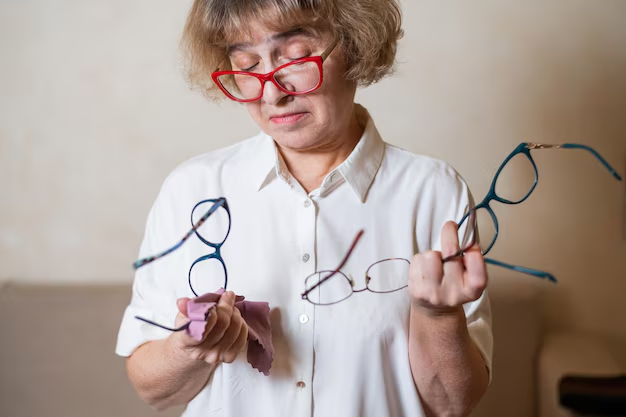Can Glasses Improve Vision for Cataracts? Exploring Your Options
Cataracts are a common ocular condition that can significantly impact your daily life, diminishing the clarity of your vision. As the lens of your eye begins to cloud with age or due to other factors, tasks that were once effortless can become challenging. If you're exploring ways to manage cataract symptoms, you might wonder: Can glasses help with cataracts? Let's delve into this question, exploring the efficacy of corrective lenses in managing cataract symptoms and considering alternatives that could better serve your needs.
Understanding Cataracts
Before we explore how glasses can potentially assist with cataracts, it's essential to understand what cataracts are. A cataract is the clouding of the eye’s natural lens, which lies behind the iris and the pupil. Common symptoms include:
- Blurry Vision: Loss of sharpness and detail.
- Glare Sensitivity: Difficulty seeing in bright light or when looking at light sources.
- Reduced Night Vision: Challenges with seeing and navigating in low-light conditions.
- Color Perception Changes: Colors may appear faded or dull.
These symptoms can appear gradually, often going unnoticed until they start interfering with daily activities such as reading, driving, or recognizing faces.
Can Glasses Help with Cataracts?
When it comes to managing cataract symptoms, glasses can provide temporary relief but are not a cure. Here’s how:
Improved Clarity for Refractive Errors
Prescription glasses are designed to correct common refractive errors such as myopia (nearsightedness), hyperopia (farsightedness), and astigmatism. If cataracts accompany these errors, an updated prescription can help maximize your existing vision clarity. However, glasses cannot reverse the cloudiness caused by cataracts.
Reducing Glare and Enhancing Contrast
Specialized eyeglasses with anti-reflective coatings may reduce glare and improve vision contrast, thus making sunlight or oncoming headlights less blinding. Tinted lenses or sunglasses can also aid in reducing light sensitivity, a common ailment for those with cataracts.
Temporary Symptom Management
For those in the early stages of cataracts, glasses may help for a short period before surgery or other definitive treatments are necessary. Adjustments for task-specific needs, such as reading glasses, can make daily activities easier.
Note: It's crucial to consult with an eye care professional to evaluate your specific needs and the potential benefits of glasses for your cataract symptoms.
Exploring Surgical and Non-Surgical Options
While glasses may provide temporary symptom relief, they do not address the root cause of cataracts. Here are other options to consider:
Cataract Surgery as Definitive Treatment
The most effective way to treat cataracts is through cataract surgery, where the cloudy lens is removed and replaced with an artificial one. This procedure is highly successful and can dramatically improve vision.
Benefits of Cataract Surgery:
- Restored Clarity: High clarity and better light perception post-surgery.
- Improved Color Vision: Vibrant color perception without the cloudiness.
- Quick Recovery: Most patients experience improved vision within days.
Non-Surgical Alternatives
For those not yet ready or unable to undergo surgery, some lifestyle adjustments can help manage symptoms:
- Optimization of Lighting: Enhancing home lighting and using large-print books can help.
- Visual Aids: Magnifying lenses can assist with reading or small tasks.
- Regular Monitoring: Frequent eye exams can track cataract progression and adjust interventions accordingly.
How to Maximize Vision with Cataracts
Whether or not surgery is in your current plans, optimizing your environment and habits can be constructive. Here are some tips:
At Home
- Increase Contrast: Use contrasting colors in your home to make edges and objects stand out.
- Safety Enhancements: Install night lights to illuminate hallways and stairs, reducing fall risk.
- Avoid Glare: Use window treatments like sheer curtains to manage sunlight indoors.
On the Go
- Proper Sunglasses: Wear polarized sunglasses outdoors to minimize glare.
- Hat with Brim: A wide-brimmed hat can block direct sunlight from entering your eyes, reducing discomfort.
Work and Reading Spaces
- Task Lighting: Use adjustable desk lamps aimed at your work surface without shining directly into your eyes.
- Screen Settings: Adjust computer and device settings for larger text and reduced screen glare.
Quick Tips for Managing Cataracts 👁️
Keep these practical tips in mind to manage cataract symptoms effectively:
- 💡 Upgrade Lighting: Brighter environments with reduced glare help improve visibility.
- 🕶️ Wear Polarized Sunglasses: Minimize glare from reflective surfaces.
- 🔍 Use Magnifiers: Helpful for reading fine print.
- 📝 Monitor Vision Changes: Keep track of any alterations in vision and report them to your healthcare provider.
By leveraging these strategies, you can maintain a quality lifestyle even as you manage cataract symptoms.
Conclusion: Navigating Your Cataract Journey
Whether or not glasses help with cataracts depends on the stage and severity of the condition. They may provide some temporary relief, but they do not offer a long-term solution. Surgical options like lens replacement are the most definitive treatments, while lifestyle adjustments and regular professional consultations can support those experiencing early symptoms. Remember, understanding your options empowers you to make decisions that improve your vision health and overall quality of life. Stay informed, consult professionals, and take proactive steps tailored to your specific needs.
